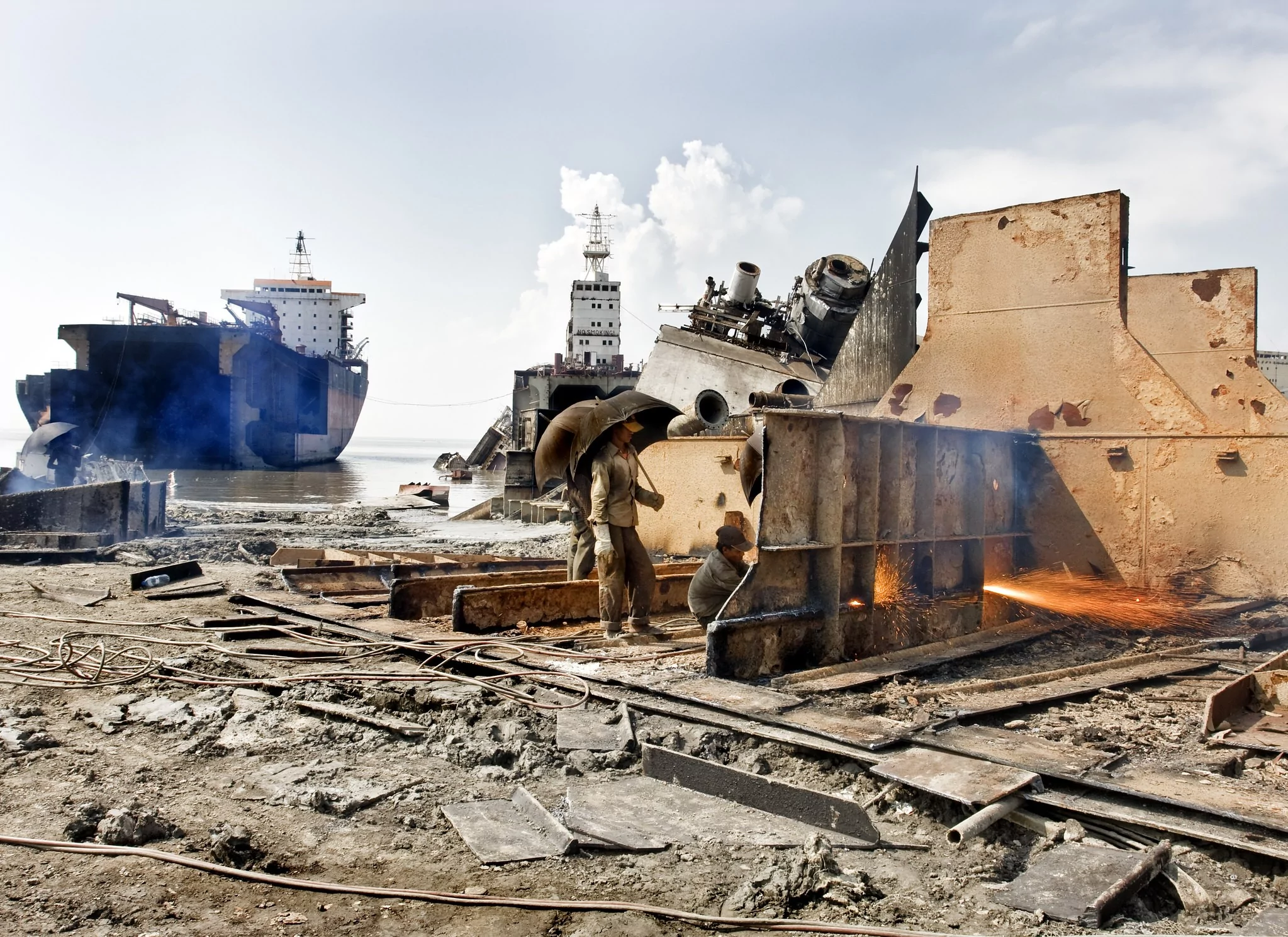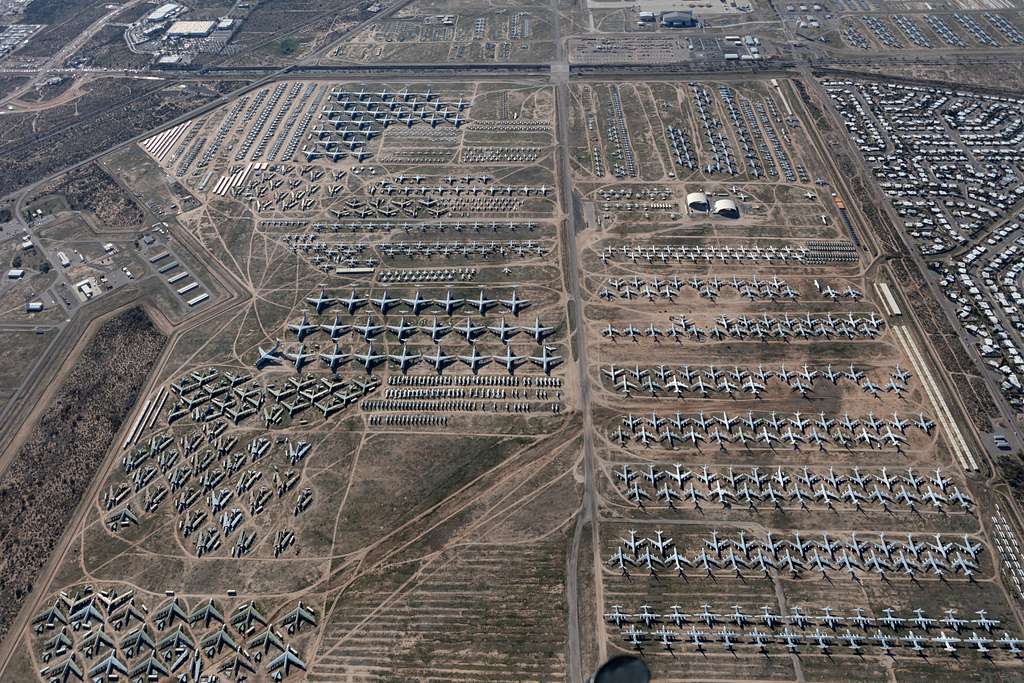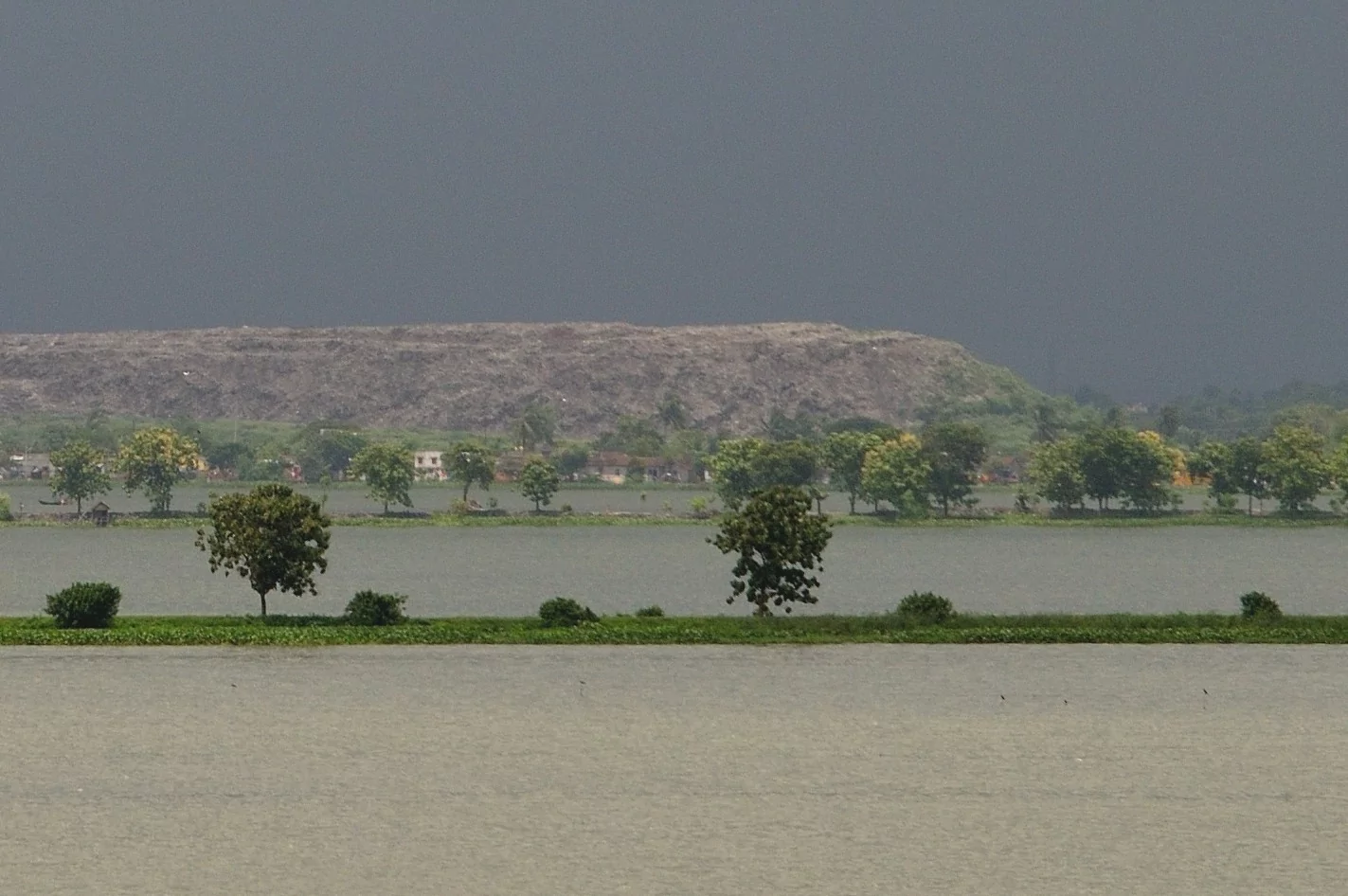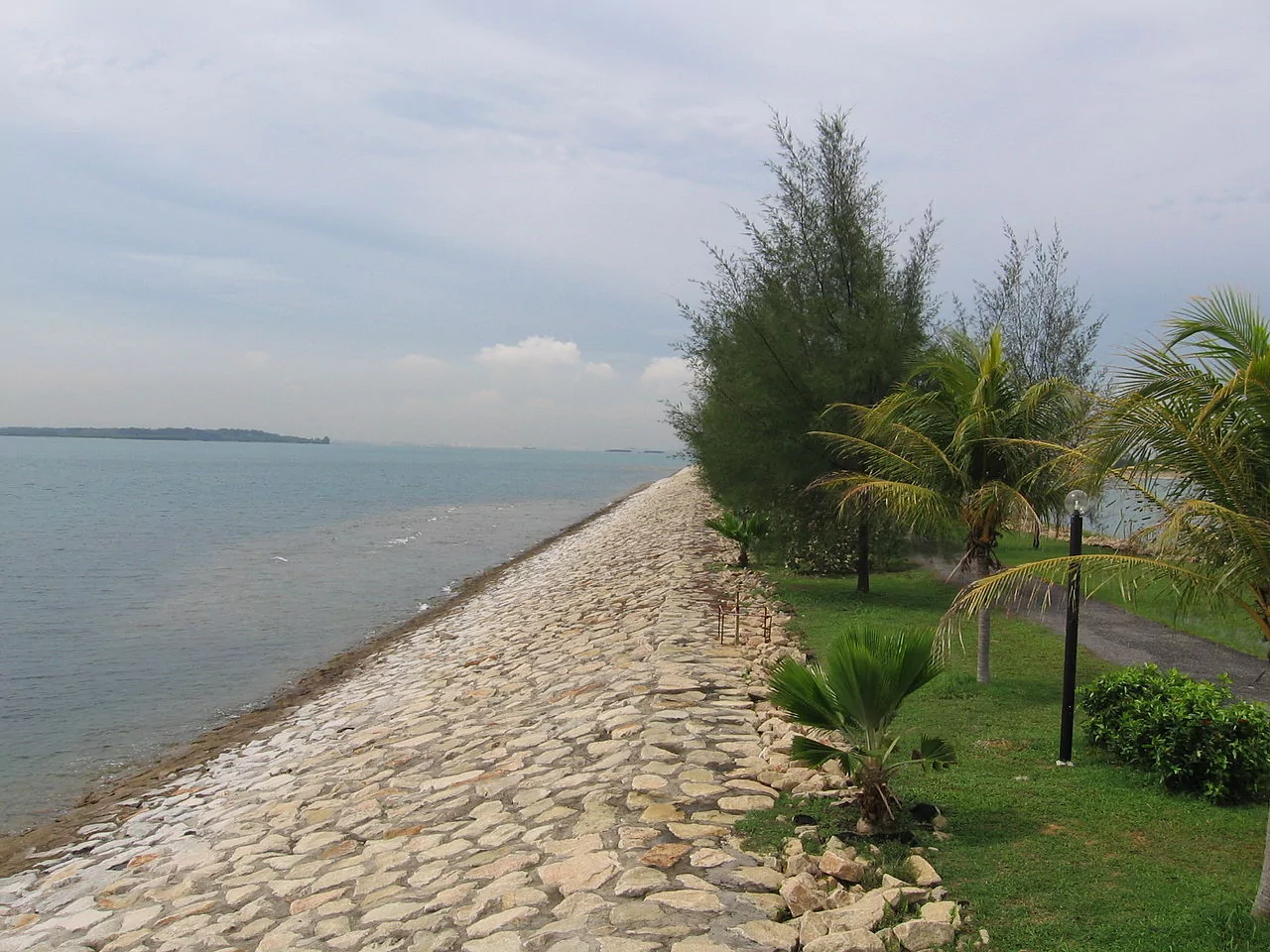
Smelly, hideous and even toxic, garbage is humanity’s most visible by-product, perpetually flooding our planet with endless stream of plastic, paper, fabrics and construction materials. Our modern lifestyle combined with the global rise in living standards have dramatically exacerbated this problem to biblical proportions. While most of us will probably avoid venturing out to a landfill due to its extremely negative connotation, some dumping sites across the world offer an intriguing and honest perspective of the way we live and its effects on the environment.
Despite their formidable appearance, ships usually function properly for merely a couple of decades, afterwards the maintenance and insurance become too costly to justify any further use.
In order to mitigate the revenue loss due to the vessel disfunction, aged ships are routinely sent for large yards, where they are completely stripped off any valuable components and materials that then recycled and sold worldwide.
It might come as a surprise, but a small beach near Faujdarhat, a neighborhood of Bangladesh’s second largest city, Chittagong, accounts for 20 percent of the world’s ship scrapping industry.
Cheap labor and a lack of oversight made this strip of coastline a haven for any ship owner who want to get rid of his vessel and receive a hefty amount of money in return. Unfortunately, the poor conditions and the absence of regulation claimed the lives of many workers, most of whom are poor villagers who flocked to Chittagong in a hope of getting a better life in the big city.
While the ship breaking yard used to attract tourists who gather there to witness the dismantling of old maritime vessels, the frequent accidents made the ship scrapping companies very suspicious of foreign visitors, thus encircling most of the numerous yards with tall wire-fences and security patrols, making it a very difficult place to access. However, one alternative way to bypass the new obstacles is by hiring a local fisherman during high-tide, albeit this option is undoubtedly not for the faint hearted.

The scrapping of a vessel in Chittagong's ship breaking yard
photography by: Naquib Hossain
The technological revolution that radically transformed our lives had many unintended consequences, one of which is the gargantuan quantity of electronic waste, mostly old and disused household appliances. Even though shipping e-waste from rich nations to Africa is deemed unlawful according to the Basel Convention, many countries still manage to bypass the restriction by labeling the garbage shipments as a donation.
Subsequently, millions of computers, refrigerators and other electric devices are dumped in numerous sites all across Africa, most notably Agbogbloshie, the largest e-waste landfill in the world.
The dumping site is part of Old Fadama, an informal settlement in Ghana’s capital, Accra, that has been swarmed by migrants of the country’s rural parts, many of whom were originally refugees from tribal conflicts.
Agbogbloshie is notorious for the harsh conditions in which local workers, including children, are exposed to, ultimately causing early deaths among the vast majority of them, as extracting the precious metals from the various appliances often entails burning wires and other parts that release highly toxic substances. As a matter of fact, the adjacent Korle Lagoon is believed to have one of the world’s most contaminated waters.
Visiting Agbogbloshie is kept only for the most intrepid travelers, and even then, caution is absolutely a must, since this area is not only ravaged by severe pollution but also considered as a hot spot for criminals, hence travel in group with a local companion is highly recommended.

A pile of disused computers in Agbogbloshie
photography by: Agbogbloshie Makerspace Platform
The US air force is by far the largest and most powerful in the world, with a staggering number of 330,000 active servicemen and over 5,000 aircrafts. Given the constant development of newer and more modern jets, many aircrafts are deemed obsolete and no longer suited for operational use. Nevertheless, their precious content and in some cases even a potential for reincorporation in a military role require a large-scale storage facility.
Tucked away in the middle of the Arizonian desert, Davis-Monthan Air Force Base near the city of Tucson is home to the world’s largest dumping site of outdated aircrafts, officially named the Aerospace Maintenance and Regeneration Group, yet simply known as the Boneyard.
Roughly 4,400 planes are scattered here on a 10.5 square kilometer area, protected from corrosion by the region’s arid climate.
Following World War II, hundreds of disused Boeing B-29 Superfortresses and Douglas C-47 Skytrains were stored in the base, succeeded by decades of relocation of old aircrafts into the site, ultimately making it a giant graveyard for military jets.
While some aircrafts are temporarily stored here before being sold to foreign countries for reuse or put back into military service, others are scrapped for any spare parts that will be later integrated in operating planes, or alternatively smelted for rare metals.
Interestingly, the base has a designated zone for well-renowned aircrafts known as the “celebrity row”, housing famous items from different eras as well as planes before being transported into museums, most notably “Enola Gay”, the bomber that dropped the nuclear bomb on Hiroshima during WW2.
Luckily, the Boneyard is open for visitors who are offered a two-hour bus tour across the site anywhere from Monday to Friday. Take note that disembarking the bus is strictly forbidden, while backpacks and camera cases are not allowed either.

An aerial view of the airplane Boneyard in Tucson, Arizona
photography by: Library of Congress
By the end of the decade India will become the world’s most populous country as its population will soon surpass that of China. The significant demographic growth and the never-ending influx of rural migrants into urban centers will have severe implications on the already precarious environmental status. Among the many challenges the country face is the massive amount of waste generated each day and the lack of proper dumping sites and recycling centers.
With over 14 million inhabitants, Kolkata is India’s third largest metropolis after Mumbai and Delhi. 80 percent of the city’s daily waste of 5,000 metric tons ends up at Dhapa, a poor informal settlement at the eastern part of Kolkata. Due to Dhapa’s limited capacity and the absent of any other alternative landfills around the city, the dumping site is overflowed with garbage, so much so that its height now stands at staggering 15.5 meters of rubbish.
Surprisingly, the area around the landfill is home to 30,000 people, the majority of whom are migrants from Bangladesh and neighboring states. While for the residents of Kolkata, the landfill merely serves as the place where most of their waste is destined, for the people of Dhapa it’s their main source of livelihood, as many of them work as ragpickers, scavenging the site for anything that might be valuable, which then can be sold.
By now you probably wonder why such a dreadful and polluted place is even discussed in a travel blog, and while it’s true that Dhapa is not a tourist site, its surreal sights of constant fumes (the result of decomposing organic waste), garbage scrappers and the stunning views of Kalkata’s skyline make it a fascinating place for intrepid travelers and photographers who are keen to witness a dystopian landscape.
If you wish to balance this place’s harsh reality with something more optimistic, you’ll be glad to learn that most of Dhapa is actually covered by wetlands that even awarded this locality with a Ramsar site title. Abundant with water and fertile land, Dhapa is not only the garbage capital of Kalkata but also its main source of vegetables and fruits.

Dhapa's wetlands on the backdrop of its landfill
photography by: Biswarup Ganguly
Formerly a British colony, Singapore is one of the richest countries in the world, that grew into a regional financial center thanks to its strategic location. Its miniscule size coupled with immigration waves from all over Asia made this city-state one of the most densely populated nations on Earth.
Singapore’s limited space creates all sorts of challenges, one of which is the dumping of its waste, reaching more than 2 million metric tons annually.
After running out of any land for waste disposal, the Singaporean government decided to create an offshore landfill by land reclamation, whereby the islands of Pulau Semakau and Pulau Seking, south of Singapore downtown, were merged together to form the city’s sole dumping site.
Completed in 1999, the landfill is surrounded by a 7-kilometer rock bund that protects it from harsh weather conditions, while its underwater part is coated with impenetrable membrane that prevents any leakage of leachate. Interestingly, the vast majority of the waste that ends up in the site is first incinerated and then transported by barges to Semakau’s receiving station.
Since most of the waste in Semakau is made of incinerated ash and buried in designated cells, the site has no resemblance to a typical landfill, as it both crystal clean and lacks any kind of smelly odors. In fact, a lot of effort was put to rehabilitate the islands’ original mangrove forest and aquatic fauna, that as of today flourish alongside the landfill.
If you wish to visit this exceptional landfill, Singapore’s National Environment Agency offers several guided tours to the islands, however, take note that the tours must be booked in advance, at least 3 weeks prior to your visit.

Semakau's rock bund surrounding the site
photography by: Sengkang